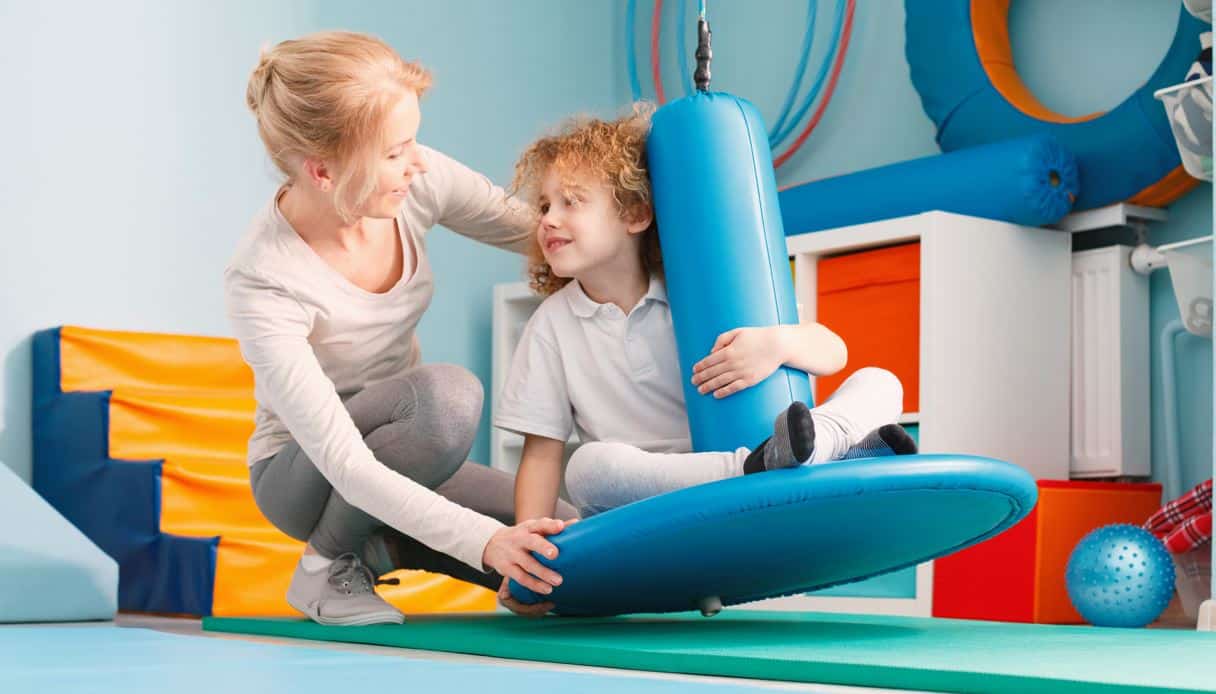
As we learn more about the struggles and characteristics involved with an autism spectrum diagnosis, a number of different related disorders are getting identified as well. One such category of disorders has been aptly named Sensory Processing Disorders. This grouping of symptoms can be quite a struggle for many people, both caregivers and those that have been diagnosed, especially when it isn’t all that clear what the disorder actually involves.
However, sensory processing disorders are extremely common, especially among those who have been diagnosed as being on the autism spectrum.
What is a sensory processing disorder?
A sensory processing disorder, or SPD, is a common condition that many kids and adults experience. It is characterized by the brain’s inability to process sensory inputs. In simple terms, this means that a person with SPD will struggle to receive and respond to senses like sight, sound and smell. In some cases, this means that someone might be oversensitive to sensory experiences in their world, while in other cases someone else may be insensitive to the same stimuli.
At SensoryOne, our sensory environment designs specialists help you determine the best sensory equipment and layout or users with sensory processing issues, frequently those with Autism. Let us help!
Although sensory processing disorders are mostly commonly identified in children, many adults also struggle with them. SPDs are often experienced by those who are on the autism spectrum, however these two disorders are not mutually exclusive. Like autism, SPDs are usually experienced on a spectrum so there is no obvious and direct point of diagnosis.
Some common characteristics of sensory processing disorder may include:
- Incoordination and lack of balance
- Difficulty in engaging the individual in conversation
- Over stimulation: sounds are too loud, rooms are too bright, clothes are irritating or too tight
- Under stimulation: can’t sit still, thrill seeking
- Issues with food textures
- Don’t respond well to sudden movements, sounds, touches or smells
- Increased behaviour concerns
- Poor motor skills
- Reduced muscle tone
- May exhibit language delays
- Doesn’t pick up on social cues
Many benefits to a sensory room or space
A sensory space has many benefits for people of all ages, especially for those who may be dealing with some level of a sensory processing disorder. The ability to spend time in a space that offers a wide variety of sensory opportunities can help make living with a sensory processing disorder more manageable.
It can help improve socialization
Some children with autism spectrum disorder, or ASD, struggle with interacting with their peers and teachers. The ability to retreat into a safe space with controlled sounds, interactions and activities can provide a sense of safety and allow visitors to socialize on their own terms. This opportunity to control sensory input can help those with an SPD to evaluate their surroundings and learn how to accept more social opportunities, even outside of the room.
Can promote cognitive development
An important aspect of cognitive development is the ability to explore the principles of cause and effect through play. Hands on exploration and experimentation encourages both kids and adults to problem solve in order to learn about their world and how to interact with it.
Improve motor skills
It’s not uncommon for coordination skills such as those needed to hold a pencil, tie a shoe, button a shirt or walk and talk at the same time to develop more slowly in people with autism or sensory processing disorders. A sensory room can offer visitors an opportunity to work on many different kinds of motor skills without the pressures of a highly stimulating environment.
They encourage visitors to feel calm
For someone with a sensory processing disorder, the world we live in can be an intense, stressful and highly stimulating place. A sensory room or space can help them to combat this overstimulation in a way that gives them the stimulation that they need.
It encourages the development of underused senses
People with a sensory processing disorder tend to spend more time relying on selective senses and almost hiding others. A multi-sensory room can provide a safe space for them to explore and experiment with their less favoured senses.
Helps teach coping skills
When overwhelmed with sensory input, it can be difficult to respond and cope in the moment. A sensory room is the perfect testing space for someone with SPD to figure out what works for them in order to mitigate these feelings of overwhelm. A sensory space is also the perfect place to try out and experiment with new sensory experiences.
A sensory processing disorder is manageable, if you know what you’re dealing with
Before a person gets diagnosed with a sensory processing disorder their behaviour may seem puzzling and even frustrating. However, once you’ve taken the time to get a diagnosis and are able to attribute symptoms to their cause, it becomes easier to understand. The average person who doesn’t have any SPDs of their own may be tempted to showcase impatience when faced with the wide variety of symptoms, however that just makes things tough on everyone involved. Incorporating a sensory room or space into the lives of anyone diagnosed with autism or a sensory processing disorder can help visitors learn many skills that will help them in their day to day lives.



